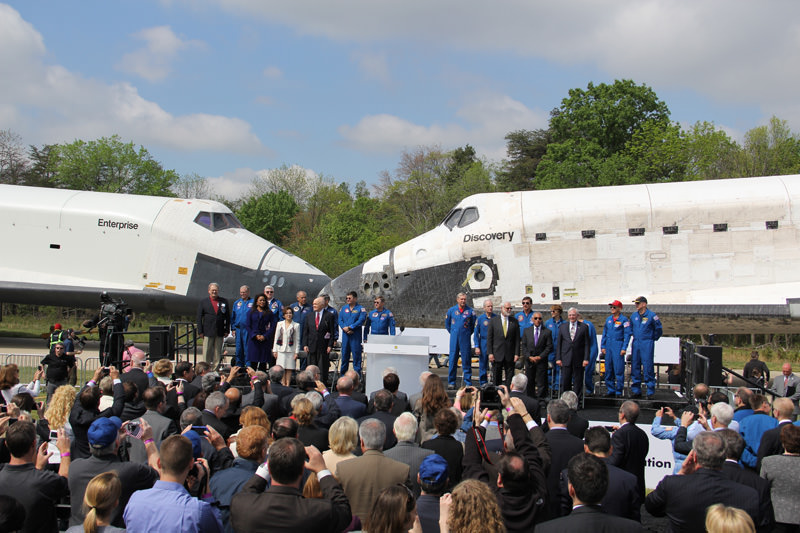[/caption]
Space Shuttle Discovery, the longest serving and most flown spaceship in human history, entered her eternal home today, Thursday, April 19, at the Smithsonian’s National Air & Space Museum Annex in Virginia.
Discovery thereby assumed her new status as a museum relic and monument to the promise and glorious dreams of space exploration, inspiring future generations of explorers to reach far beyond their grasp and accomplish the unthinkable. That’s what space and science are all about.
The space shuttle program and all three of NASA’s winged spaceships were forcibly retired by politicians at the conclusion of the final shuttle mission, STS-135, in July 2011 which left America with no means to launch our own astronauts into space and to the International Space Station.
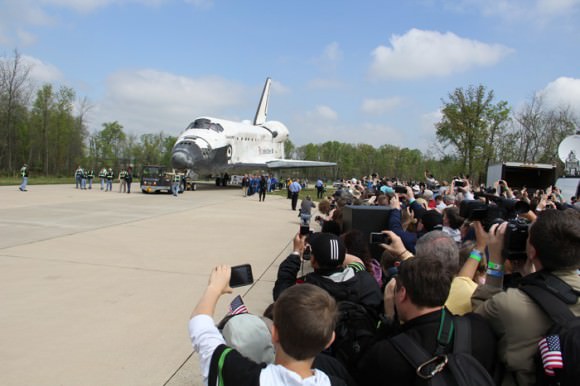
Discovery officially became the property of the Smithsonian Museum when NASA Administrator Charles Bolden signed the title of ownership over from NASA to the world renowned museum at a public ceremony held today at the Smithsonian’s Steven F. Udvar-Hazy Center in Chantilly, Virginia.
“Today, while we look back at Discovery’s amazing legacy, I also want to look forward to what she and the shuttle fleet helped to make possible,” said NASA Administrator Charles Bolden. “As NASA transfers the shuttle orbiters to museums across the country, we are embarked on an exciting new space exploration journey. Relying on American ingenuity and know-how, NASA is partnering with private industry to provide crew and cargo transportation to the International Space Station, while developing the most powerful rocket ever built to take the nation farther than ever before into the solar system.”
National Air and Space Museum Director, General John “Jack” Dailey said, “Discovery has distinguished itself as the champion of America’s shuttle fleet. In its new home, it will shine as an American icon, educating and inspiring people of all ages for generations to come. The Museum is committed to teaching and inspiring youngsters, so that they will climb the ladder of academic success and choose professions that will help America be competitive and successful in the world of tomorrow.”
Bolden and Dailey signed the transfer documents in front of the huge crowd who came to celebrate Discovery’s arrival.
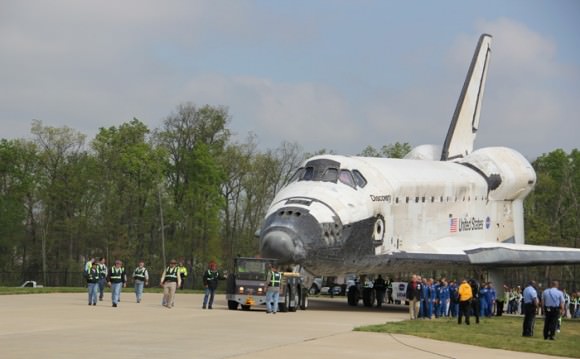
The official handover ceremony was witnessed by a prestigious gathering of some three dozen astronauts including more than a dozen men and women who served as Commanders of Space Shuttle Discovery and Senator and Astronaut John Glenn, the first American to orbit the Earth 50 years ago in 1962.
Glenn flew to space for the 2nd time aboard Discovery as a payload specialist in 1998 at the age of 77. He is the oldest person to fly in space.
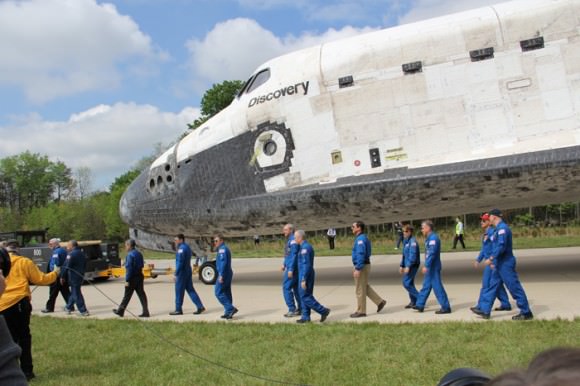
And the general public showed their enthusiastic support for NASA and space exploration by attending in the thousands and staying all day for the dozens of activity stations, presentations and displays organized by NASA and the Smithsonian and its donors.
Glenn made clear his disagreement with the end of NASA’s shuttle program.
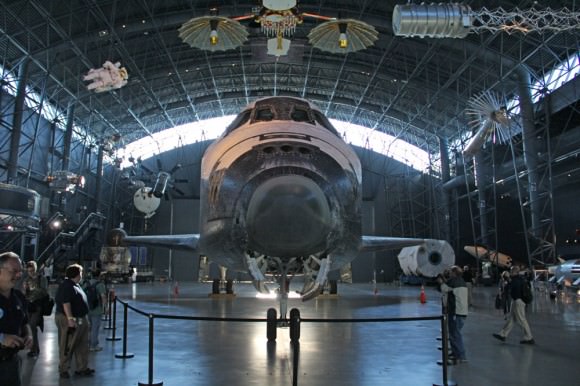
To make way for Discovery, Space Shuttle Enterprise was first towed out a huge rear door of the museum early this morning. Discovery and Enterprise then met nose to nose as the dramatic backdrop for the official welcoming ceremony.
Late this afternoon, Discovery was towed to her final resting place into the museum to the exact spot formerly held by Enterprise, which had been on display at the Virginia facility since 2003.
Altogether, Discovery flew 39 missions and spent a full year (365 days) in space, orbited Earth 5,830 times and traveled 148,221,675 miles during a space flight career spanning 27 years.
Discovery flew its maiden voyage on Aug. 30, 1984 and blasted off on her final voyage on Feb. 24, 2011. The STS-133 mission was the final flight for the illustrious orbiter which landed at the Kennedy Space Center on March 9, 2012.
Discovery deployed the iconic Hubble Space Telescope to orbit, one of the premier science instruments built by humankind. Discovery delivered many other science payloads to orbit and also to explore the solar system, including the Ulysses solar probe.
The winged spaceship was NASA’s fleet leading orbiter and played a significant role in building the International Space Station and visiting the Russian Mir Space Station.

